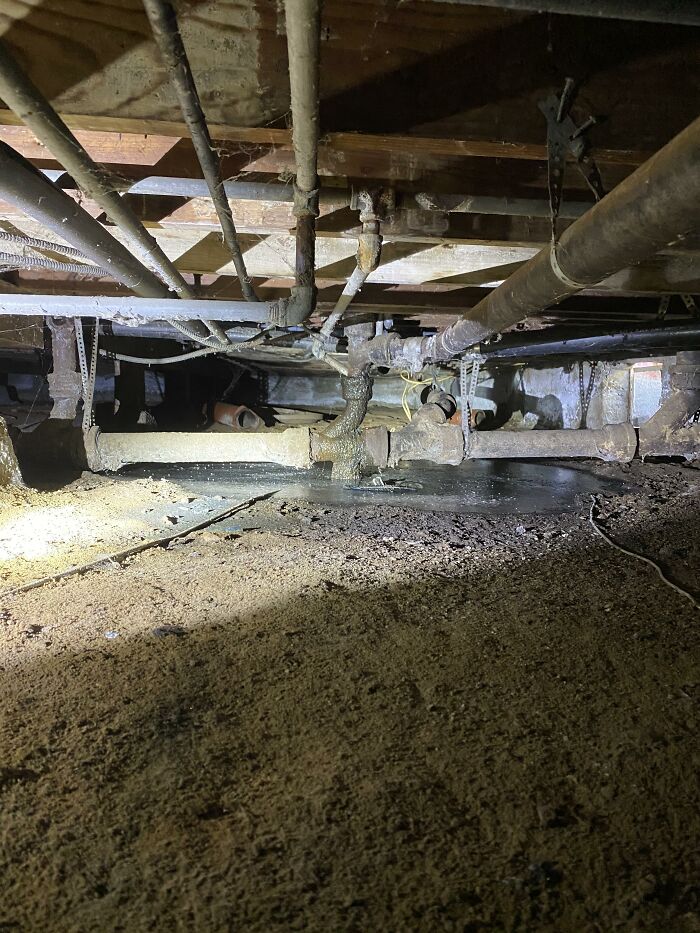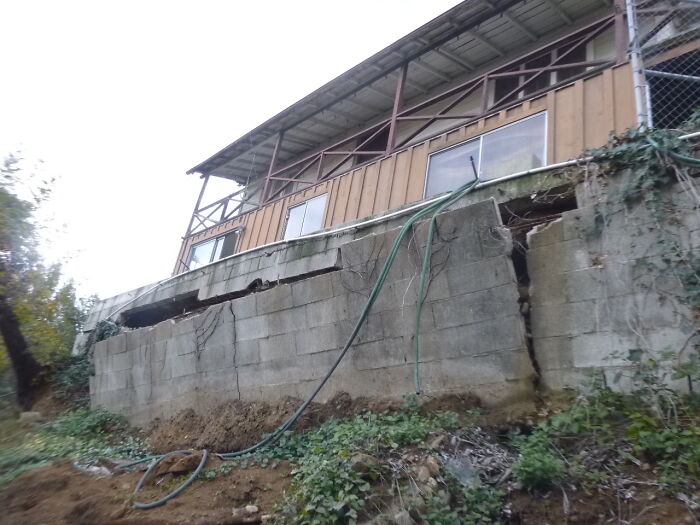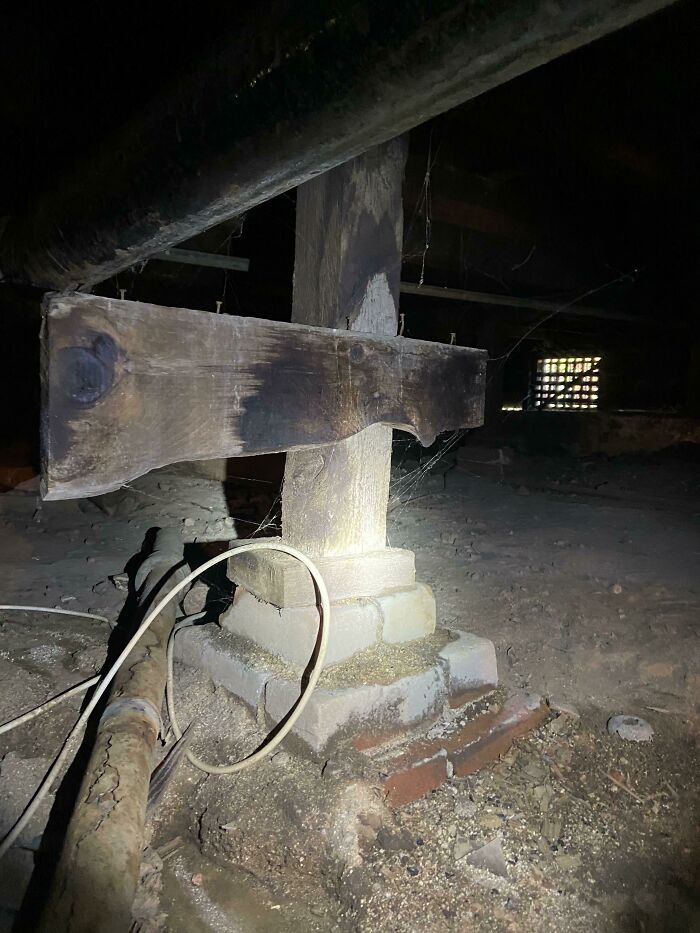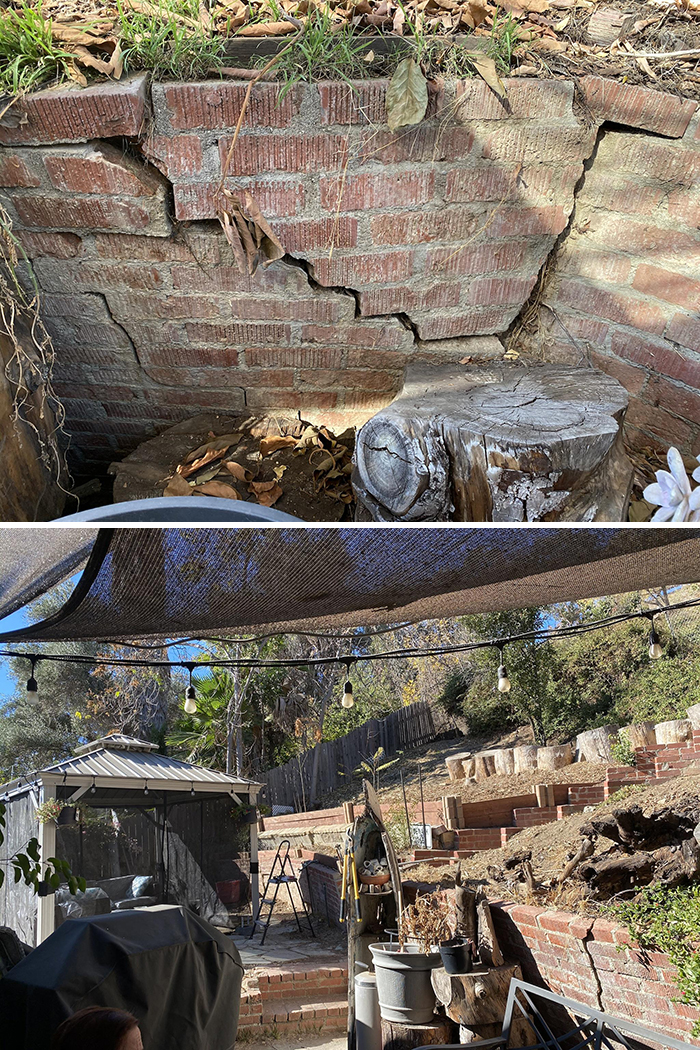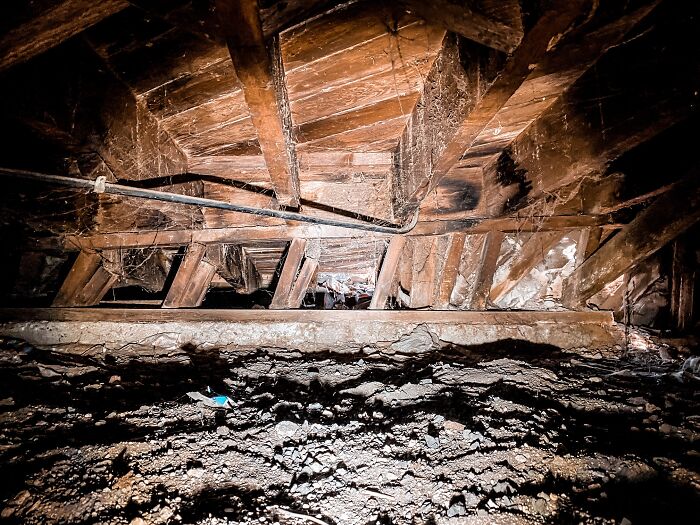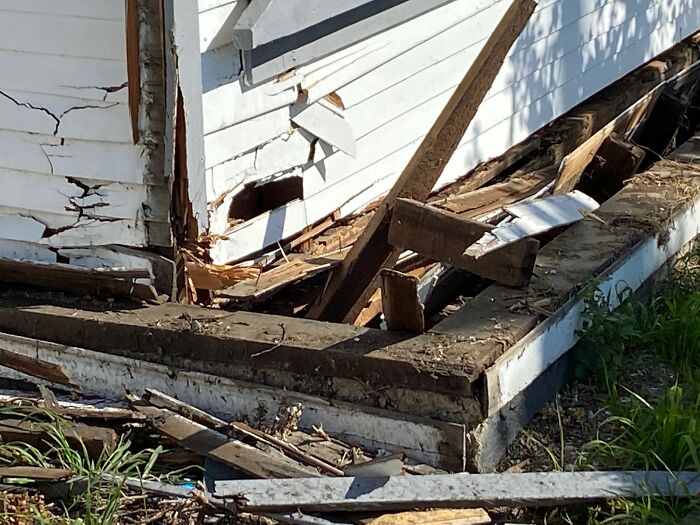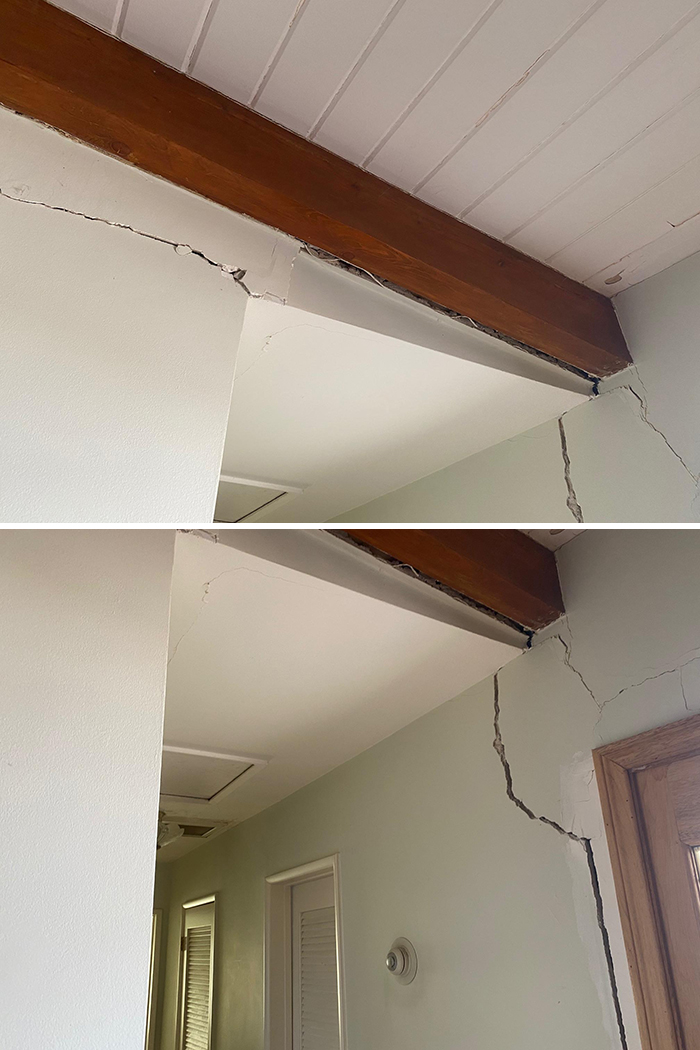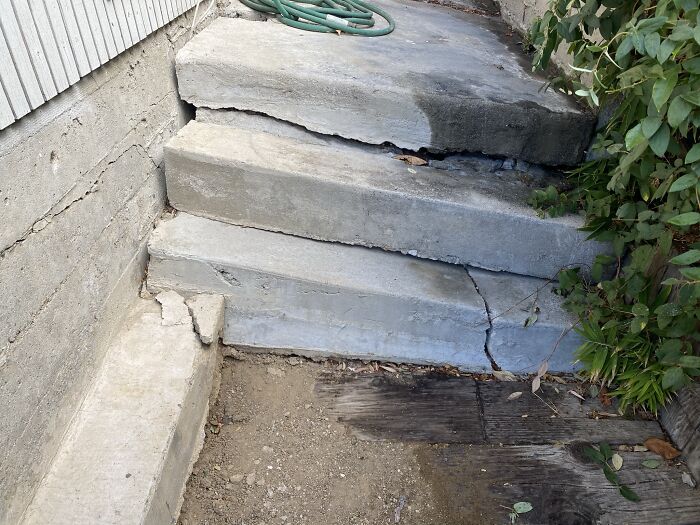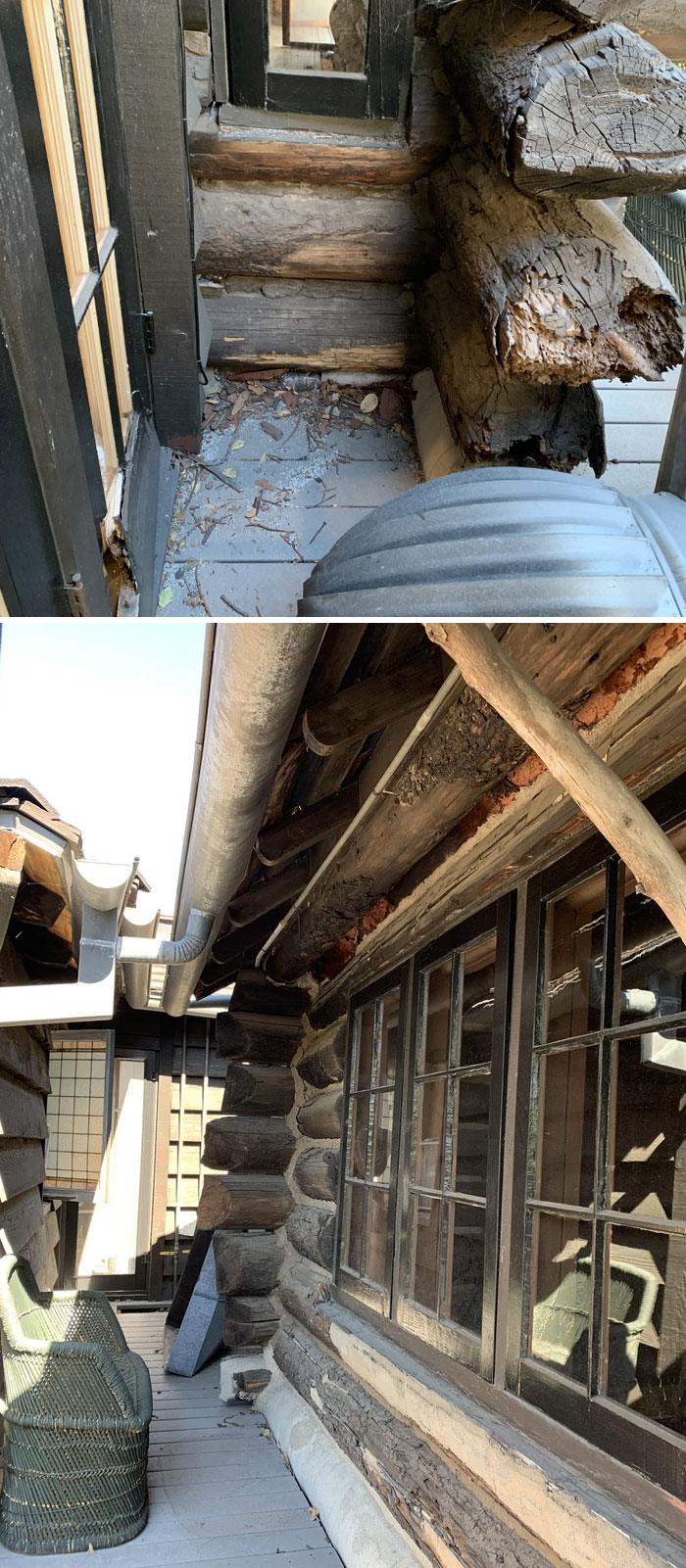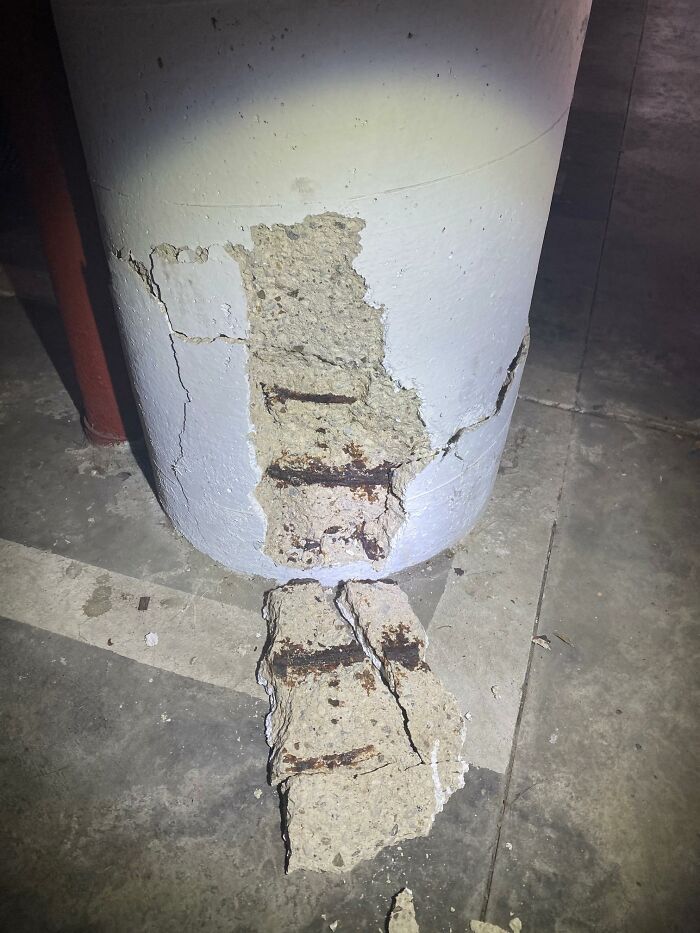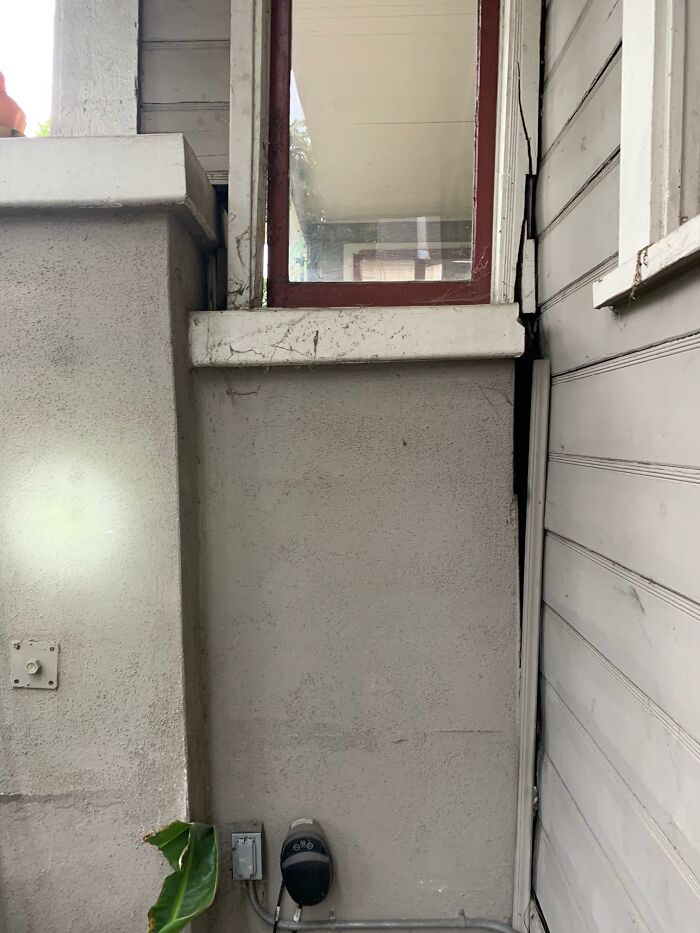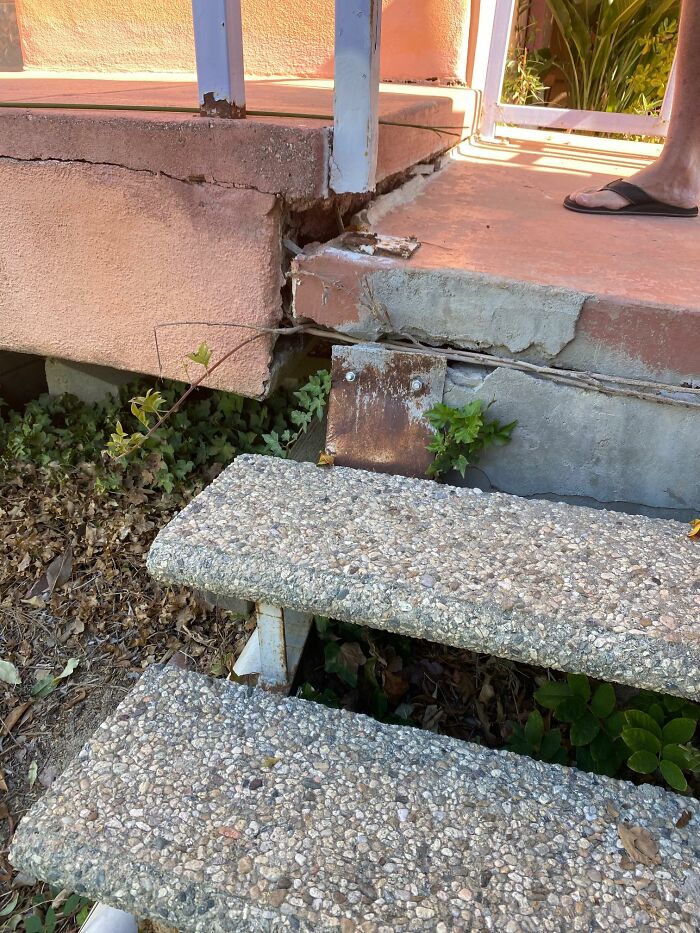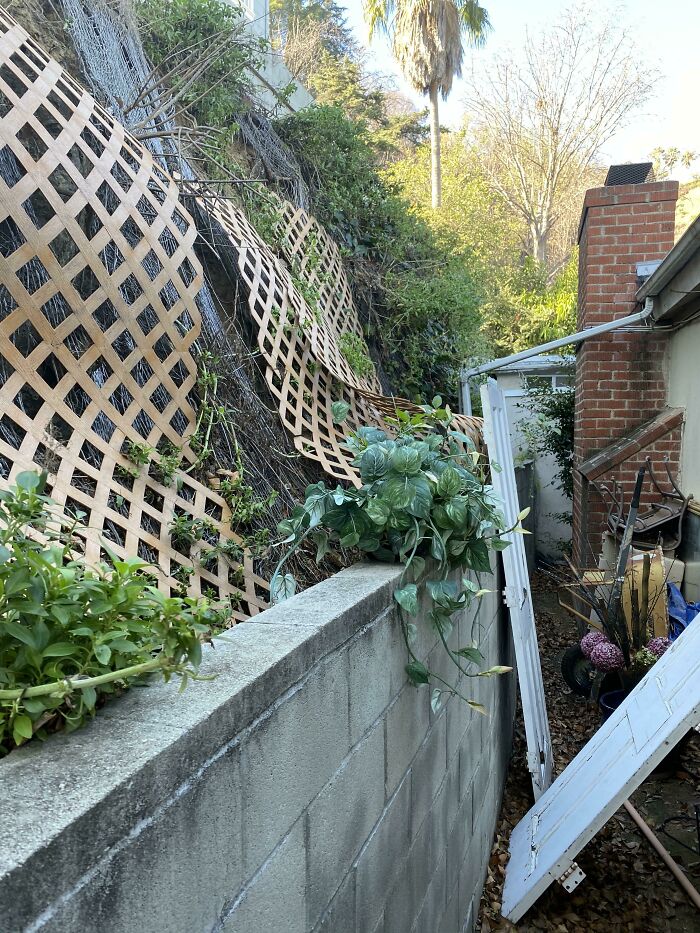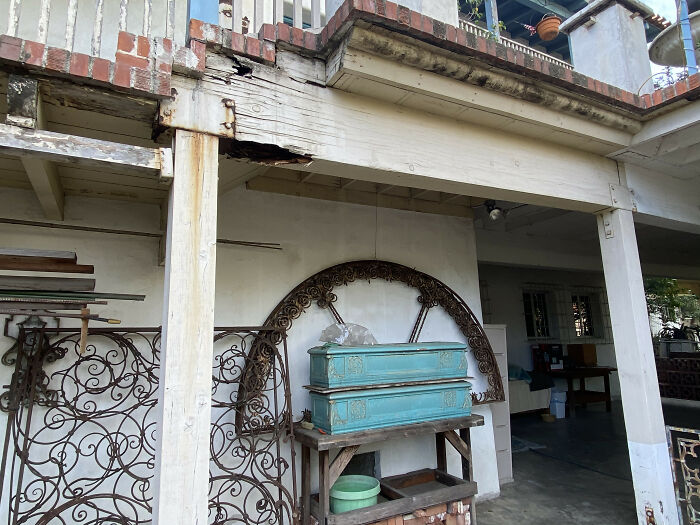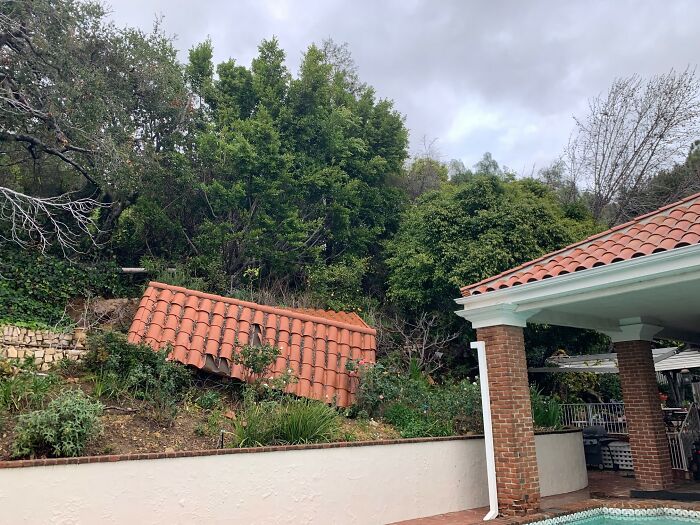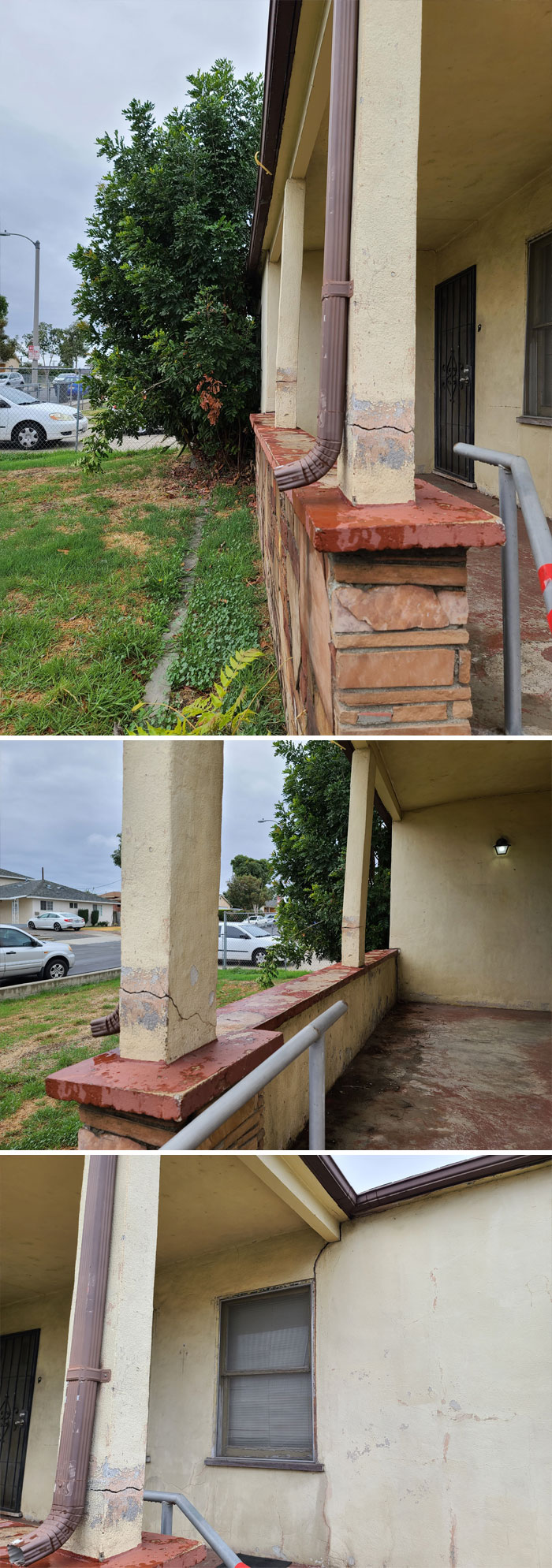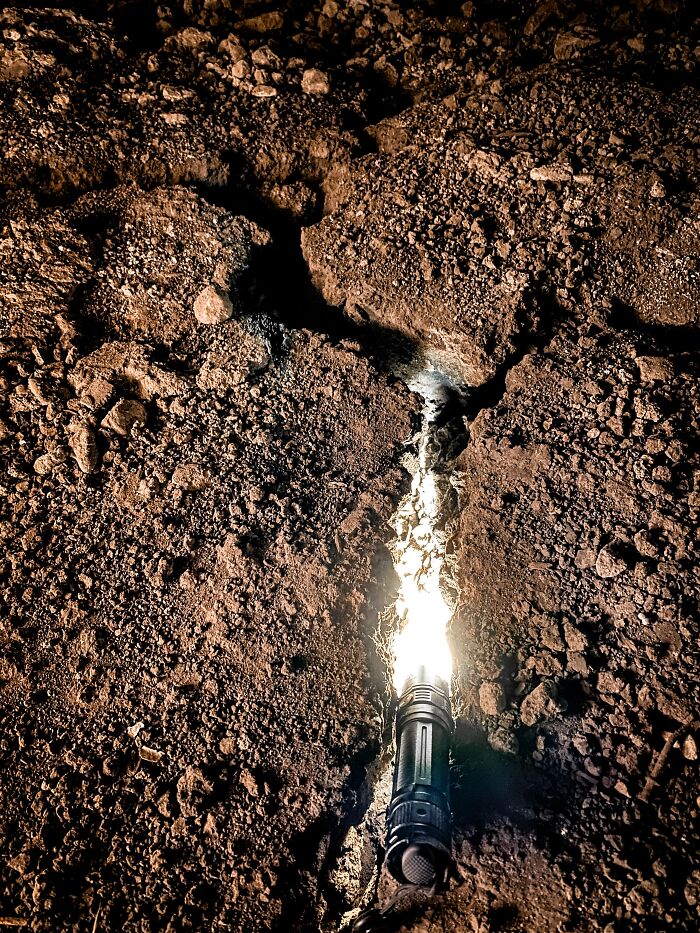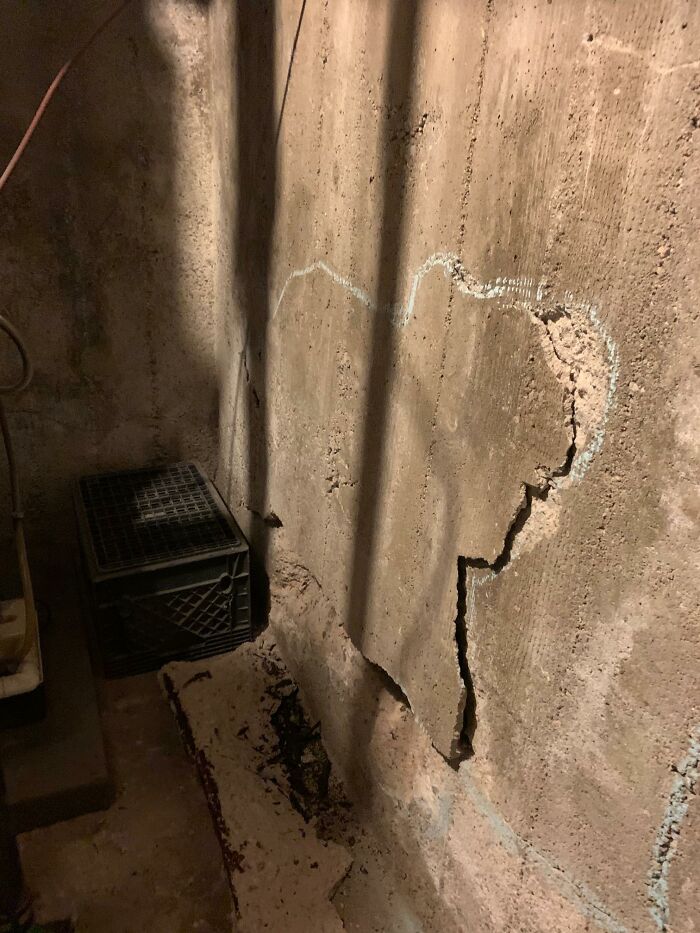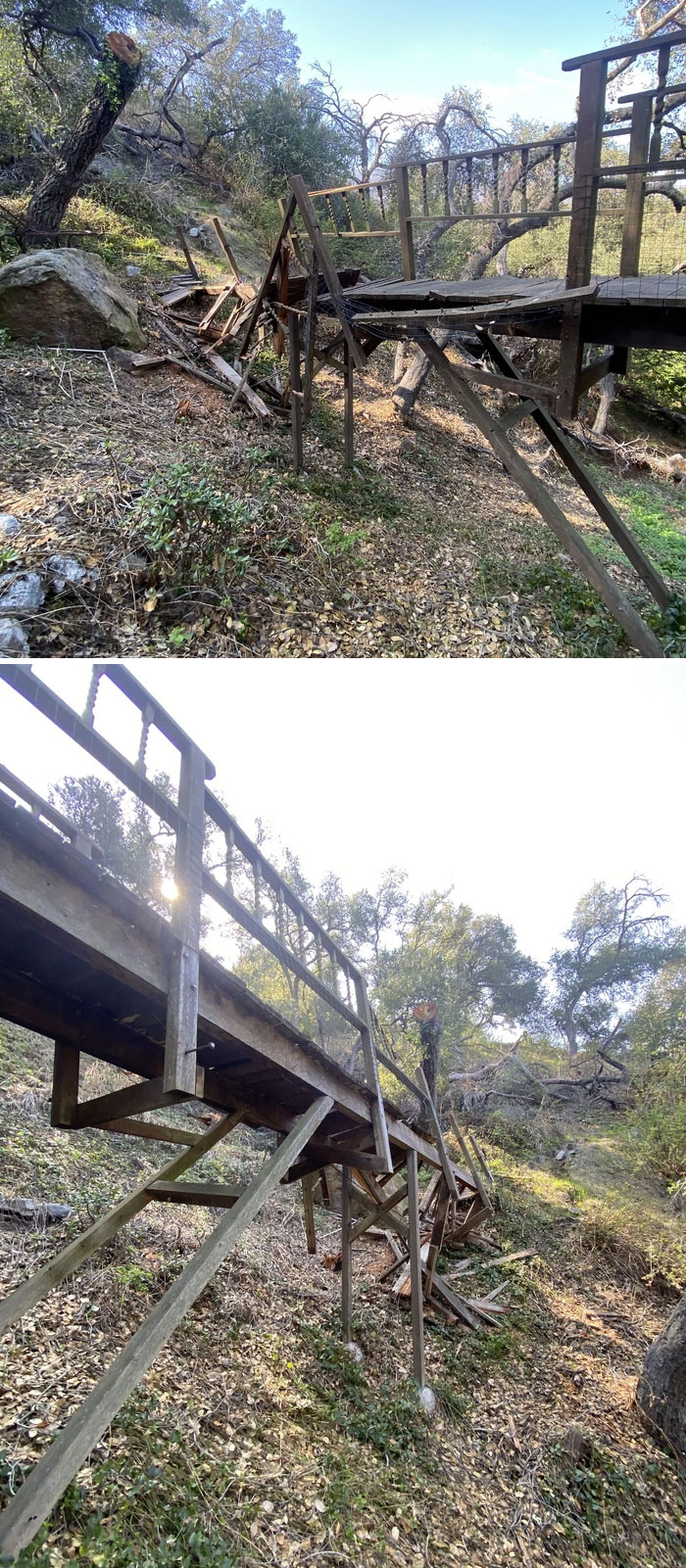For nearly 30 years, Alpha Structural, Inc. has developed a powerful reputation as the number one foundation engineering and repair, landslide repair, earthquake, and structural rehabilitation contractor in the Los Angeles area. The company has over 400 years of combined technical experience and all of it is hard-core and down-in-the-trenches, not managed from behind a computer.
Alpha Structural, Inc. also shares photos from its engineers' day-to-day work, including all the funniest, most bizarre, and downright dangerous things they discover. We've already covered their finds here, here, and here, but recently they've unearthed more surprising treasures, so we put together a new piece on them.
More info: AlphaStructural.com | Facebook | Instagram | Twitter
This post may include affiliate links.
Here we have a brick retaining wall experiencing surcharge from the neighboring hill. Structures that are settling can cause this surcharge in the soil. This creates a high-pressure situation which then pushes out the remaining soil and results in this type of damage to retaining walls.
Since the company has already inspected tens of thousands of properties, it's hard to really surprise the engineers. But it still happens. "I would say we're more likely to be surprised by what's under the home than the structure itself! Although, while we are not alarmist in any way, every once in a while we will come across a structure that we are surprised is still standing."
"We've definitely inspected properties that should have been demolished too, though they never take our advice on that particular issue."
Being that my company in LA does this sort of repair/prevention work, this was some scary news to see this morning. Torrential rain and debris caused a large chunk of Highway 1 on the West Coast of California to wash away.
You're going to need yourself a Yoshi if you're wanting to cross here. Back in 2017, a massive landslide covered up over a half mile of the road. It took months to clean up and there was no access around it. If it continues to rain, I wouldn't be surprised if more of this happened in and around Southern California.
If you're ever concerned about your slab foundation being cracked, look out for this
The most nightmarish inspection we’ve done last year was the property in Portuguese Bend down on the Palos Verdes Peninsula. First off, because of soil conditions and high landslide risks, not much structural work can be performed there in the first place.
"The home had a very interesting foundation system made up of screw jacks, steel beams, and cribbing (commonly used for temporarily lifting a structure while work is being done underneath)," Derek Marier from Alpha Structural, Inc. told Bored Panda.
"The front portion of the deck and home was sinking and unfortunately, the homeowner can’t really do much about it. It could have toppled over at any given moment and that’s why the 'nightmarish' description fits well."
I guess the original builder of this property chose the ancient Roman vibe for this foundation.
We think this takes the cake. This is not rebar. These are old Helical Piers from the 70s. It has never been a method that we have used as a company and this is why. They are very practical in many situations, but for steep hillside and seismic zones, they are not. We've seen this all too many times in LA.
Helical piers, AKA "IKEA fastenings for foundations" ---- quoting my friend, a gen contractor
Please watch your step!
You can see that the ends of the joists were cut off and patched at some time in the past. Dry rot probably.
Marier said that safety is a huge deal for employees at Alpha Structural, Inc. "Crawl suits, masks, gloves, steel-toed boots, and many other forms of safety precautions are taken. The chance that a building is actually going to fall over when we do our work is slim to none. Any actual danger is sniffed out pretty quickly and avoided. If our guys think it’s unsafe to inspect or work on a location, they’ll make a call based on their best judgment and sometimes they choose to not do it. That’s just our safety policy!"
This concrete patio is sitting on a retaining wall that has been pushed outward due to what is known as a surcharge, or hydrostatic pressure build-up. Hollow areas formed under the patio, causing the cracking and further sinking of the patio from the roof load above
The side of this property is sinking, causing this column to lean backward, bringing the connecting beam forward in the other direction. It could slip in the future if it goes unhandled.
Notice the compression of the posts into the girder. They go into the girder about an inch. This property has some crazy settlement and moisture problems
OK, I'll ask: Does anyone run a grader and over property, or do they just build on loose fill? WTH?
It looks right and wrong at the same time
IT LOOKS LIKE A DOGO windows are the eyes window flap things ears the chimny thing is the nose and the garage is the mouth ITS A DOGO
This doesn't happen with just a gust of wind... though that might be all it would take to bring it down
This deck system uses an angled beam that attaches to the concrete patio below for support. The very edge of the deck is beginning to dip down, causing a lot of tension where the beam meets the patio. If you look closely, you can see the concrete lifting with the beam. No partying on this deck for a while!
Our firm was brought into this project to lower the basement down two feet and to add additional supports for framing and brand new concrete foundation walls. The structure had some bad rot as well. The project began with a demo of all the drywall and lath to expose rotting elements of the basement area. It didn't take long to open everything up. We exposed tons of rotting wood and plenty of termite damage, which is always a pleasant surprise. The rim joists were in very bad shape, as were the studs connecting to them. It turned out to be quite the rot repair and we had plenty of replacing to do along with the concrete foundation. After ripping open the walls and exposing everything, engineered shoring was installed to support the stories above. You may be asking, "why does the shoring go down into the ground?" Good questions. Since we are lowering the slab 2 feet, we needed to make sure the structure was supported down to that level where the new slab will be poured, at least until the concrete foundation walls were in! Demolition of the existing walls and slab came next. Additional shoring was added toward the higher elevated area to minimize any risk of buckling in the floors above. It looked wicked from an exterior viewpoint. I'll add that these guys did such a fantastic job of staying on track and getting everything done in an efficient and safe manner. After the concrete was demolished, everything was cleaned up and concrete forming and steel reinforcement was installed in preparation of the walls to be poured. Rebar dowels were set at the bottom of the wall to make the process of connecting the slab grid much easier. Anchor bolts were suspended into the concrete forming so they would set nicely into the new foundation. These will connect the framing of the building to the new foundation walls. Once the foundation walls were cured, the shoring remained in until the additional framing was installed. The forms were stripped and everything came out perfect. No honey comb or pockets. They did such a good job. Internal footings were used to help support the newly replaced framing and beam in the center of the room. Then they added a vapor barrier and sand, and finally put in the steel grid for the concrete slab. The pour came and went and the finishers did what th Thus, the project (at least for our end of the work) was complete.ey had to do in less than two hours. It came out perfect (as it should) and the client was very happy.
I think I needed to see some satisfying repairs after all the dodgy jobs
I'm not sure what his bottom jaw is doing near his rear end, but always a "fun" find.
This isn't what you want to see greeting you as you enter the crawlspace.
I'm trying to figure what century, this died in? Because.... This animal looks GINORMOUS! I'm being really honest! I am not sure what kind of 🐕 or 🐈, is that big? Not only that, how the heck did this precious animal end up with the legs ripped off the body? We can only imagine, that doesn't happen during death. Unless, someone/something did it! POOR LITTLE ANIMAL! Raine Soo, YOU ARE 💯 % RIGHT! It absolutely looks, like it died in agony!
Most likely it happened after death. The joints would become disarticulated and then scavengers would pull at the legs while eating it.
Load More Replies...As the flesh decays, the mouth will look like this. It may have just died in peace, but that's just how a body decays. As for what other people mention - legs do fall off and bodies usually don't decay on their own, without some bugs helping so. that's the explanation for that. It is sad that someone probably misses this poor animal and wonders what happened.
Load More Replies...Someone somewhere never found out what happened to their missing cat. :(
IT'S HIS OPINION! LEAVE HIM ALONE! HE HAS HIS OWN RIGHTS TO SHARE A COMMENT! Damn.
It's the body of someone's pet cat or dog with it's hind legs ripped off and laying there behind the body :/
Load More Replies...That's true. I read they'd use people even sometimes.
Load More Replies...If you hear something move near you, close your eyes. You never know if it was a basilisks meal
Step on this deck at your own peril...
We’re earthquake retrofitting this building and discovered a few columns that were completely corroded at the bottom. Scary...
Part of your retaining wall/house seems to be missing, sir
"Frankenstein's basement" - Aptly put by one of our assessors.
Are there no building laws in it USA?! In the UK this sort of thing wouldn't be signed off by a building inspector!
Anyone want to take a dip the sewage pool under this house?
A car hit the side of this house and caused some pretty significant structural damage.
Not much can be seen from the inside surprisingly, except water damage and some cracking.
Out with the old, in with the... new?
This is a very early 1900s home with a brick foundation that we inspected.
In addition to the foundation needing a replacement/sister foundation, much of the framing needs to be replaced as well.
It's hard to consider this as a foundation since the concrete is as stable as the dirt underneath it.
This masonry wall supported the back half of the home, as well as a deck in the back. Tons of moisture and hillside erosion caused the wall to lose its grip on the hillside and rest of the structure. This type of failure tends to happen in the rainy season in Los Angeles.
It's almost like Nature is saying: "Humans shouldn't live in the LA area. We're either quaking, sliding, eroding, or dehydrating". Hmm...
This is why you always remove stucco before you engineer a solution!
A nice pile of dust supporting a home.
This is a very bad spalling concrete foundation. I assume most of you know what that is by now, but if you don't feel free to ask.
Here's some more spall damage on a different property!
Ive had real estate appraisers tell me "They only look under the house (and in the attic) if it's for an FHA loan !! Hopefully, some will see these pix !!
This was very interesting for me. Coming from Europe, we have an entirely different way of constructing houses and the post & pier method is very rare here.
I love your sense of humor! Pyramids of Pasadena (think I bought a car from a little old lady there, once). It's been years since I gave my crawl space a good look over! Thankfully my house is only 756 sq. ft. Not much crawling needed!
Bentonite clay soils in Colorado wreak havoc on concrete. Lived the reconstruction of home in Colorado- crew was there every day for 18 months. They were a California company too- these pictures illustrate their expertise for sure. A lot of these homes are old and so this damage has happened over time. Building codes and rules change over time. I sure hope there are higher standards to get a CO on a new home in California these days..
This was very interesting for me. Coming from Europe, we have an entirely different way of constructing houses and the post & pier method is very rare here.
I love your sense of humor! Pyramids of Pasadena (think I bought a car from a little old lady there, once). It's been years since I gave my crawl space a good look over! Thankfully my house is only 756 sq. ft. Not much crawling needed!
Bentonite clay soils in Colorado wreak havoc on concrete. Lived the reconstruction of home in Colorado- crew was there every day for 18 months. They were a California company too- these pictures illustrate their expertise for sure. A lot of these homes are old and so this damage has happened over time. Building codes and rules change over time. I sure hope there are higher standards to get a CO on a new home in California these days..

 Dark Mode
Dark Mode 

 No fees, cancel anytime
No fees, cancel anytime 


























